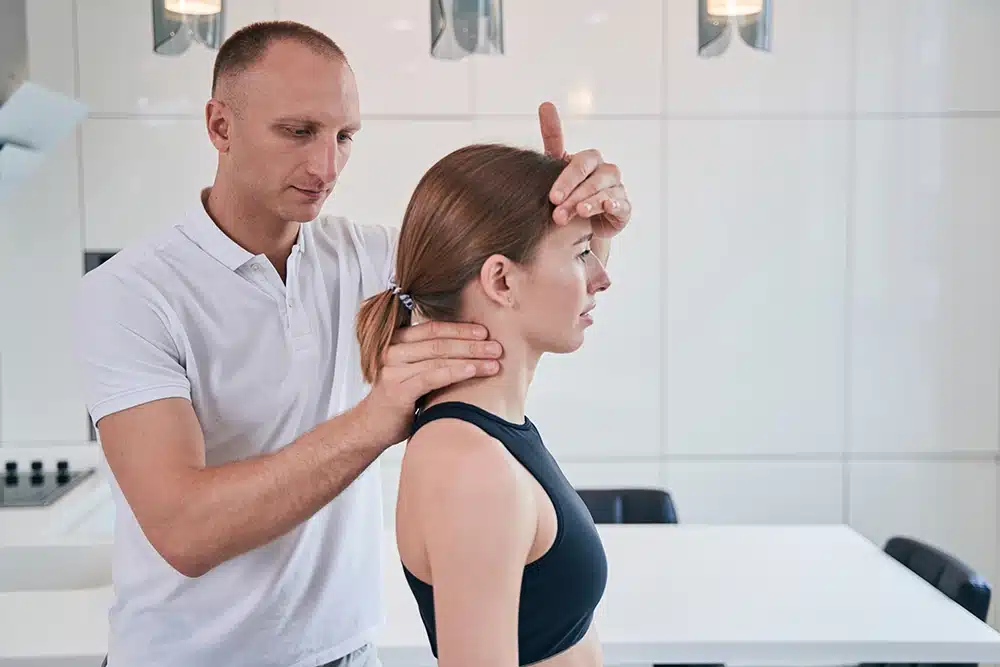
Table of Contents
ToggleAre you tired of dealing with the nagging discomfort of back pain? You’re not alone. Back pain affects millions of Americans, and it can be a major roadblock to your daily activities. But the good news is that you don’t have to suffer in silence.
In this blog post, we’ll dive deep into the world of fast back pain relief. We’ll explore various strategies, treatments, and lifestyle changes that can help you alleviate your back pain quickly, so you can regain your comfort and mobility. So, let’s get started on the path to a pain-free back!
Back pain can be a real pain in the… well, back! But before we jump into the solutions, it’s essential to understand what causes this discomfort in the first place.
Common culprits include strained muscles, sprained ligaments, ruptured disks, and irritated joints. Even simple actions like turning over in bed can lead to a back injury. But don’t worry; understanding the cause is the first step to finding relief.
When it comes to back pain, you want relief, and you want it now! Here are some immediate steps you can take at home to start feeling better fast:

Speaking of good posture, let’s delve deeper into why it matters. Your posture can significantly impact your back health. Slouching or poor posture can put additional strain on your lumbar region.
So, it’s time to stand tall, pull those shoulders back, and lift your head high. Your back will thank you for it!
Now, let’s talk about some practical exercises and stretches that can provide quick relief for your achy back. These exercises can help strengthen and stretch those muscles, making you less prone to future pain.
So, lie on your back, point those toes up, and gently bend one knee, pulling it towards your chest. Hold for about 30 seconds and repeat with the other leg. Ah, relief is just a stretch away!

If you’re among the many who work at a desk or have a sedentary job, ergonomics can be your best friend. Your workstation plays a crucial role in preventing and relieving back pain.
So, adjust your chair height, ensure your computer screen is at eye level, and avoid slumping. Your back will appreciate the extra care.
When the pain persists, it’s time to consider over-the-counter pain medications and topical treatments. These can offer much-needed relief. Products containing menthol provide a cooling effect that can temporarily dull the pain.
But remember, moderation is key; using too much menthol can make you more sensitive to pain. And keep an eye out for creams with cannabidiol (CBD) – they’ve shown promise in relieving back pain, too.

Your lifestyle can significantly impact your back health. Diet and sleep play crucial roles in managing back pain. A diet rich in anti-inflammatory foods like whole grains, fruits, vegetables, and yogurt can help reduce pain.
And don’t underestimate the importance of quality sleep – it can affect how much pain you can tolerate. So, invest in a comfortable mattress, use extra pillows for proper back alignment, and aim for those 7 to 9 hours of sleep each night.
If you’re looking for alternative therapies for rapid relief, we’ve got you covered. Consider acupuncture, chiropractic care, or therapeutic massage. These therapies have been known to provide short-term benefits for lower back pain.
Whether it’s the insertion of hair-thin needles, spinal manipulation, or the soothing touch of a skilled therapist, these approaches can be part of your pain relief toolkit.
Sometimes, it’s best to seek professional medical advice for your back pain. If your pain persists or worsens after trying these home remedies, don’t hesitate to consult a healthcare provider.
They can recommend physical therapy, medication, or other treatments tailored to your specific needs. Your health should always come first!

Once you’ve achieved that immediate relief, it’s time to think about the long term. How can you prevent future episodes of back pain? Maintaining a healthy lifestyle, staying active, and practicing good posture are essential. But remember, it’s not a one-time fix; it’s a commitment to your well-being.
Stress and Back Pain: Stress can indeed exacerbate back pain. When you’re stressed, your body may tense up, leading to muscle contractions and increased discomfort in the back. Chronic stress can also contribute to long-term back pain. To mitigate this, consider practicing stress-reduction techniques like mindfulness meditation, deep breathing, or progressive muscle relaxation.
Yoga for Back Pain: Yes, yoga can be a valuable tool for back pain relief. Certain yoga poses and stretches can help improve flexibility, strengthen core muscles, and alleviate back discomfort. Poses like the Child’s Pose, Cat-Cow Pose, and Cobra Pose can be particularly beneficial. However, it’s essential to practice yoga under the guidance of a qualified instructor, especially if you’re new to it.
Weight and Back Pain: Maintaining a healthy weight is crucial for managing back pain, especially if you’re carrying excess pounds. Extra weight can strain your back muscles and exacerbate existing pain. A balanced diet and regular exercise can help you shed those extra pounds and reduce the pressure on your spine.
Pregnancy and Back Pain: Pregnancy can bring its own set of back pain challenges due to the added weight and shifts in the body’s center of gravity. However, there are specific exercises and stretches designed to help pregnant women alleviate back pain. Consult with your healthcare provider or a prenatal fitness instructor for safe and effective routines during pregnancy.
Home Workspace Ergonomics: With more people working from home, creating a back-friendly workspace is essential. Invest in an ergonomic chair with lumbar support, position your monitor at eye level, and use a keyboard and mouse that promote a natural wrist position. Additionally, take short breaks to stand up, stretch, and walk around to reduce the strain on your back.
Natural Remedies: In addition to the mentioned treatments, some natural remedies may offer relief. Turmeric, ginger, and green tea have anti-inflammatory properties that can help reduce pain when incorporated into your diet. Herbal supplements like devil’s claw and white willow bark are also believed to have pain-relieving effects, but it’s crucial to consult with a healthcare professional before using them.
Psychological Factors: Absolutely, emotional well-being can impact back pain. Conditions like depression and anxiety can intensify pain perception. Managing stress, practicing relaxation techniques, and seeking support from a mental health professional can help address these psychological factors and improve your overall back pain experience.
Holistic Approach: It’s important to recognize that back pain relief often involves a holistic approach. This means considering not only physical aspects but also mental and emotional well-being. A well-rounded strategy that includes exercise, good posture, stress management, and a healthy lifestyle can be the most effective way to achieve long-lasting back pain relief.
Arthritis and Back Pain: Yes, chronic conditions like osteoarthritis and rheumatoid arthritis can contribute to back pain. Arthritis can lead to inflammation and the deterioration of spinal joints, resulting in discomfort. Managing arthritis through medications and physical therapy can help alleviate associated back pain.
Back Pain and Sleep: Back pain can significantly impact sleep quality. Discomfort may make it challenging to find a comfortable sleeping position. To improve sleep with back pain, use supportive pillows, experiment with different sleep positions, and consider a mattress designed for back pain relief.
Surgery for Back Pain: In some cases, surgery may be necessary to address severe back pain. Surgical procedures like discectomy (removing part of a herniated disk) or spinal fusion (joining two vertebrae) may be recommended when conservative treatments fail to provide relief. However, surgery is typically considered a last resort.
Proper Lifting Techniques: To prevent back pain while lifting heavy objects, use your legs rather than your back. Bend your knees, keep the object close to your body, and avoid twisting while lifting. Using a back support belt can also provide added stability during lifting.
Core Strengthening: Strengthening your core muscles can provide excellent back pain relief. Exercises like planks, bridges, and bird-dogs target the core and help stabilize your spine. Incorporating these exercises into your routine can enhance back support and reduce discomfort.
Back Pain and Travel: Traveling, especially for extended periods, can exacerbate back pain due to prolonged sitting or uncomfortable seating. To mitigate this, take breaks to stretch, use lumbar support cushions, and choose seats with good back support when possible.
Smoking and Back Pain: Smoking can contribute to back pain by reducing blood flow to the spine, impairing tissue healing, and potentially accelerating disc degeneration. Quitting smoking can be a significant step toward relieving back pain and improving overall health.
Back Pain vs. Sciatica: Back pain is a general discomfort in the back region, while sciatica is a specific condition where the sciatic nerve is compressed or irritated, causing radiating pain down the leg. Sciatica often requires targeted treatments to address the underlying nerve issue.
Physical Therapy: Yes, physical therapy is an effective way to alleviate back pain. Physical therapists can tailor exercises and treatments to your specific condition, helping to reduce pain, improve mobility, and prevent recurrence.
Aging and Back Pain: As we age, the spine naturally undergoes changes, such as the wear and tear of discs and joints. These changes can increase the risk of back pain. Staying active, maintaining a healthy weight, and practicing good posture become even more critical as we get older to manage and prevent back pain.
Massage Chairs: Massage chairs can offer relief for some individuals with back pain. They use various techniques like kneading and rolling to relax muscles and alleviate tension. While they may provide temporary relief, they shouldn’t replace other therapeutic approaches for long-term management.
Motivation for a Back-Healthy Lifestyle: Staying motivated to maintain a back-healthy lifestyle can be a challenge. Setting achievable goals, seeking support from friends or a healthcare provider, and tracking your progress can help you stay on track and prioritize your back health.
Back pain can be a real hindrance in your life, but you don’t have to let it hold you back. By understanding the causes and implementing practical strategies for fast back pain relief, you can get back to doing what you love.
So, go ahead, stretch, exercise, and take care of your back – it’s the key to a pain-free future. Don’t let back pain slow you down; take control and live life to the fullest!
GET IN TOUCH +
285 Sills Road
Building 5-6, Suite E
East Patchogue, NY 11772
(631) 475-5511
184 N. Belle Mead Road
East Setauket, NY 11733
(631) 675-6226
GET IN TOUCH +
285 Sills Road
Building 5-6, Suite E
East Patchogue, NY 11772
(631) 475-5511
184 N. Belle Mead Road
East Setauket, NY 11733
(631) 675-6226
SUBSCRIBE TO OUR NEWSLETTER +
Send us a Google review. Click this link and let us know how we did!
Review us on Yelp too.